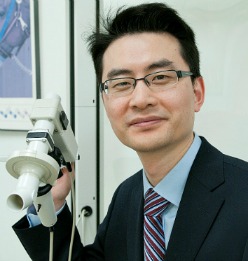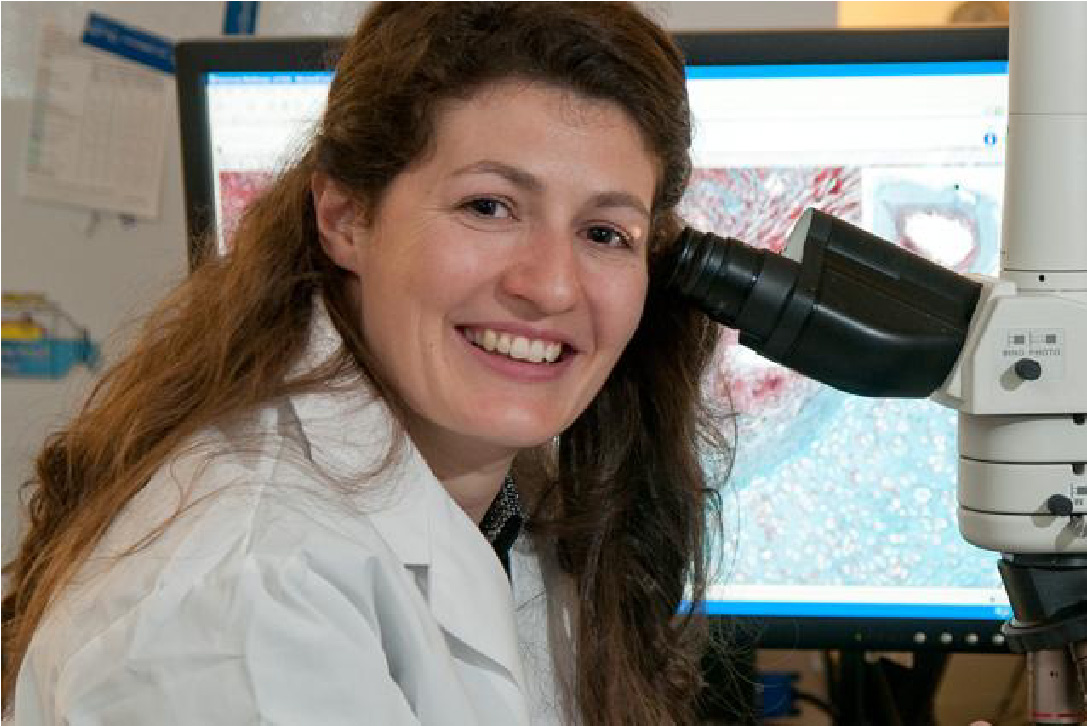
Dr. Dragos Vasilescu
Researcher, COPD
Dr. Dragos Vasilescu is using cutting-edge 3-D imaging technology to target genes that will help to identify and treat a rare genetic condition that affects patients with COPD.
What is alpha-1 antitrypsin deficiency and what is its relationship to COPD?
Alpha-1 Antitrypsin Deficiency (AATD) is a rare genetic condition that can be passed from both parents to their children. In people with this condition, the protein alpha-1 antitrypsin, which is mainly made in the liver, is not released properly. This can lead to liver disease in infants, children and adults. This protein is also responsible for balancing the inflammatory response that is switched on within the lungs when we have an infection. When people have AATD and they smoke, they can have an amplified inflammatory response leading to lung damage and severe chronic obstructive pulmonary disease (COPD).
Why is it important to link the structural changes in the lungs of COPD patients with genetics?
We know that the deficiency of the alpha-1 protein is due to a genetic disorder. Recent research from our group, led by Dr. Jim Hogg at St. Paul’s Hospital, has demonstrated that in patients with severe COPD, even in areas of the lung where tissue destruction is minimal, a large number of airways are already affected by the disease. These findings were true for COPD patients with and without AATD. In a follow up study, the group tried to find which genes were related to the destruction that happens during disease. The current study aims to determine if we can find a similar or different link between gene expression and tissue destruction in patients with AATD.
How will advances in 3D imaging techniques improve your understanding of this link?
Micro CT is an imaging device that uses X-rays to visualize the internal structures of an object such as the lung at a microscopic level without the need to section the object. The images provided by a micro CT scanner are used to measure the extent of damage caused by disease. These measures are then put in relation to the gene expression obtained from the lung tissue samples. This new method preserves both DNA and RNA. For the first time we are able to link the structural changes imaged by micro CT with targeted analysis of RNA and DNA in the same sample.
How will your research improve treatment for patients with alpha-1 antitrypsin deficiency?
We now have excellent technology to screen children for rare genetic mutations such as AATD at birth using very small amounts of blood. Early screening of infants, such as that conducted in the Province of British Columbia, means that AATD can be detected in children early in life. This gives these children early access to treatment and lifestyle education to help prevent disease progression. And the great news is that there are now replacement therapies for the alpha-1 antitrypsin protein, which means patients can live longer.
However, with age, patients naturally lose lung function, and due to direct or indirect exposure to smoking and pollution, repeated episodes of lung exacerbations can occur, which ultimately irreversibly damage the lung. Our research aims to reveal what the result of these damages are and what genes are involved with the hope that some of the genes can be targeted for developing biomarkers for detecting disease progression and treatment.
Will your research have other impacts on treatment of COPD in general?
Our study design includes patients with and without AATD. Our data show that there are distinct differences in lung structure between the two groups, and we aim to use these differences to generate gene expression signatures that can be used for personalized health.
The BC Lung Foundation grants a million dollars annually to physicians and scientists doing research in British Columbia and has been a funder of Dr. Vasilescu's research.



